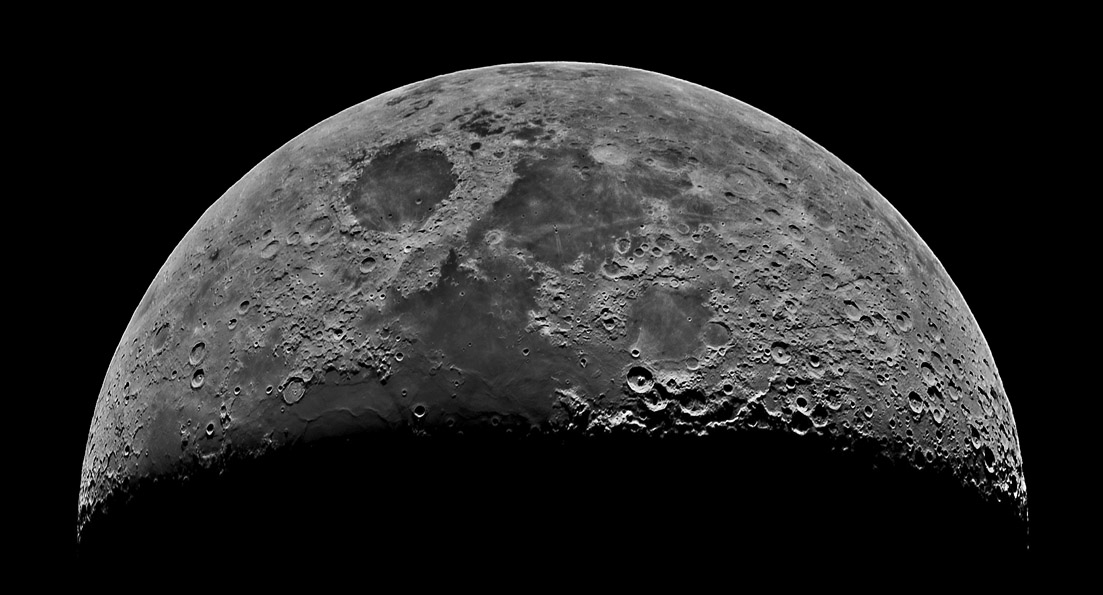Difference between revisions of "October 4, 2011"
| Line 3: | Line 3: | ||
<!-- ws:start:WikiTextHeadingRule:0:<h1> --> | <!-- ws:start:WikiTextHeadingRule:0:<h1> --> | ||
<!-- ws:start:WikiTextLocalImageRule:6:<img src="/file/view/LPOD-Oct4-11.jpg/261149334/LPOD-Oct4-11.jpg" alt="" title="" /> -->[[File:LPOD-Oct4-11.jpg|LPOD-Oct4-11.jpg]]<!-- ws:end:WikiTextLocalImageRule:6 --><br /> | <!-- ws:start:WikiTextLocalImageRule:6:<img src="/file/view/LPOD-Oct4-11.jpg/261149334/LPOD-Oct4-11.jpg" alt="" title="" /> -->[[File:LPOD-Oct4-11.jpg|LPOD-Oct4-11.jpg]]<!-- ws:end:WikiTextLocalImageRule:6 --><br /> | ||
| − | <em>image by [mailto:tim.stone.piano@gmail.com | + | <em>image by [mailto:tim.stone.piano@gmail.com Tim Stone]</em><br /> |
<br /> | <br /> | ||
You point your scope at the Moon and slip in an eyepiece that fills the field of view with the entire world. This is why we observe and don't jut look at spacecraft photos. Seeing nearly the first quarter, from Plinius to Smythii, from pole to pole gives a view of all the terrain types the Moon offers. Crater upon crater highlands, ridges curving through maria, the huge Altai mountainous basin rim, Atlas, Posidonius, Taruntius, Theophilus, rilled Janssen, dark-splotched Petavius, 8 basins, rays and giant secondary chains, and so many more marvelous sights. I drink it in and hope for a clear night. <br /> | You point your scope at the Moon and slip in an eyepiece that fills the field of view with the entire world. This is why we observe and don't jut look at spacecraft photos. Seeing nearly the first quarter, from Plinius to Smythii, from pole to pole gives a view of all the terrain types the Moon offers. Crater upon crater highlands, ridges curving through maria, the huge Altai mountainous basin rim, Atlas, Posidonius, Taruntius, Theophilus, rilled Janssen, dark-splotched Petavius, 8 basins, rays and giant secondary chains, and so many more marvelous sights. I drink it in and hope for a clear night. <br /> | ||
<br /> | <br /> | ||
| − | <em>[mailto:tychocrater@yahoo.com | + | <em>[mailto:tychocrater@yahoo.com Chuck Wood]</em><br /> |
<br /> | <br /> | ||
<strong>Technical Details</strong><br /> | <strong>Technical Details</strong><br /> | ||
| Line 13: | Line 13: | ||
<br /> | <br /> | ||
<strong>Related Links</strong><br /> | <strong>Related Links</strong><br /> | ||
| − | Tim's [http://moonshot.timsworlds.com | + | Tim's [http://moonshot.timsworlds.com website]<br /> |
<br /> | <br /> | ||
<hr /> | <hr /> | ||
Revision as of 17:40, 11 January 2015
A Classic View

image by Tim Stone
You point your scope at the Moon and slip in an eyepiece that fills the field of view with the entire world. This is why we observe and don't jut look at spacecraft photos. Seeing nearly the first quarter, from Plinius to Smythii, from pole to pole gives a view of all the terrain types the Moon offers. Crater upon crater highlands, ridges curving through maria, the huge Altai mountainous basin rim, Atlas, Posidonius, Taruntius, Theophilus, rilled Janssen, dark-splotched Petavius, 8 basins, rays and giant secondary chains, and so many more marvelous sights. I drink it in and hope for a clear night.
Chuck Wood
Technical Details
Oct 2, 2011. Meade 5" Achromat, a Nikon D200, 300 frames aligned, stacked, and wavelet processed with Registax, final touchup with FocusMagic.
Related Links
Tim's website



